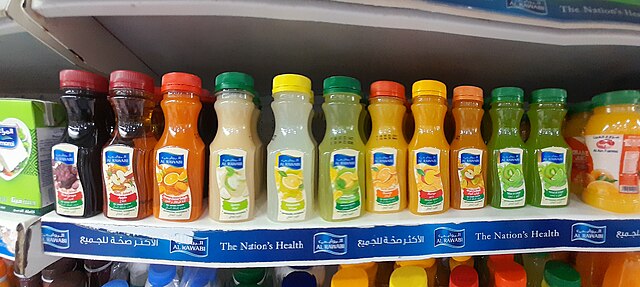The United Arab Emirates (UAE) will from January 2026 base its sugar-sweetened beverage (SSB) taxation on a three-tier sugariness model, impacting prices.
On September 23, 2025, the Federal Tax Authority (FTA) and the Ministry of Finance announced the levy reform on mainly soft drinks. Other sweetened food forms like gels, extracts and powders also fall under the unilateral approach.
For beverages, the approach will override an existing carbonated drink levy for a master sugar tax under three content categories.
The three categories include high (>8 grams), moderate (5 to 8 grams) and low sugar (<5 grams) content per 100 ml, each taxed differently.
Where the product has natural and added sugar, both sweet contents will incur the same levy calculation.
100% natural or 100% artificial sugar products will escape the new tax as long as they remain additive-free.
According to the FTA, the approach aims to promote healthy living among the citizenry through controlled processed sugar intake.
Companies have the mandate to allow sweetness tests in registered labs – and lack of reportage will automatically garner high levy.
Price Effect on Mainly Beverages
This new taxation regime is likely to augment the basic marketing metrics of most sweetened products such as soda and orange juice prices.
Drinks with over 8 grams of sugar per 100 ml will be costlier than lower threshold ones from comparative higher tax.
This will likely elevate retail rates of beverages because they enjoy prolific intake among sweetened food classes.
Prices will also depend on the cost of the given sweetener, which is mostly raw sugar. Sugar averaged 5.09 AED ($1.61)/kg versus the world’s average of $1.55 in April 2025, per the Global Food Prices.
In the alternative beverage category, all natural juices will retain their normal market rates since they will eschew this levy.
Energy liquids will also be price-comfortable because an existing separate excise tax releases them from the current reform.
Finally, all medical niche concentrates such as baby formulas will escape price violation under the new tax rule.
So, come 2026, beverage prices in the UAE will change for good or for worse depending on their sweetener levels. Meanwhile, below are a few current retail facts about the industry.
UAE Beverage Industry Statistics
The UAE is a major beverage consumption hub in the Middle East, with a quarterly intake of 2.50 billion liters (Q3, 2024). Market segmentation of consumption categories consists 2/3rds soft drinks such as water and carbonates. 3/4 of the soft drink category represents bottled or bulk water. Hot beverages follow with a 1/3rd share, while dairy comes forth with a lesser portion.
Buoyed by the above consumption trends, the joint food and beverage industry in the Emirates will be worth $44 billion by 2029. The Khaleej Times reported in September 2025 that this net worth estimate will occur after an annual compounded growth of 6.8%.
How much do Emiratis spend on soft drinks per capita?
A 2025 projection shows that the UAE will average $3,900 per capita in annual food and soft drink spending. For this reason, nationwide food eateries that also sell soft drinks might hit sales returns of $8.9 billion in 2025. The burgeoning trend is courtesy of a consumer-oriented young population, disposable spending money and tasteful urbanites.
Does the UAE have major companies that make drinks like soda?
In 2025, there were several world-class companies processing energy drinks, soda and other sweetened non-alcoholic beverages in the UAE. These included Tastehead (mainly energy drinks and private label waters), Star (mainly custom energy drinks and juices) and Aujan Coca-Cola Beverages Co.
